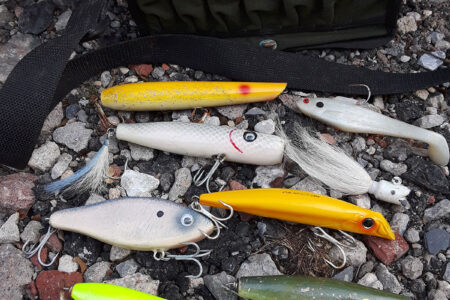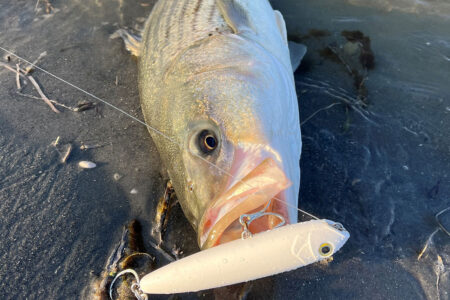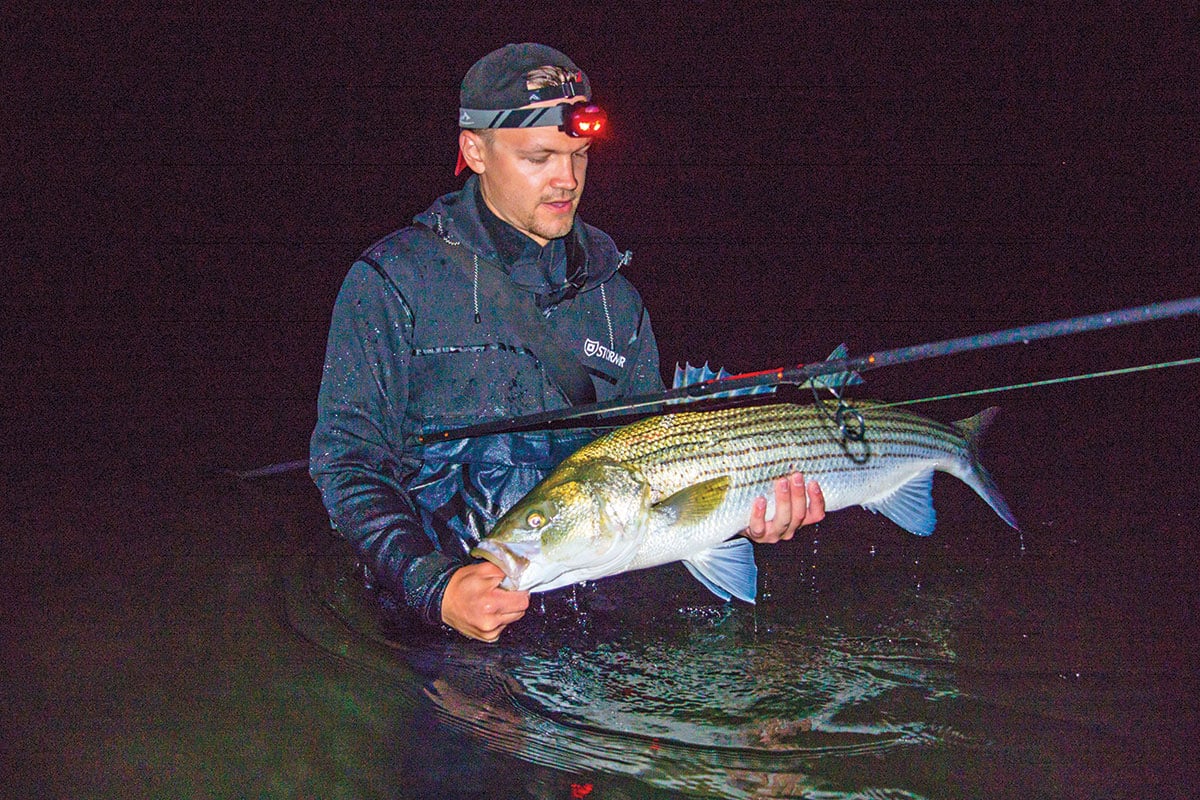
How to modify plastic-lipped plugs for better success in the surf.
It was the height of summer, and fishing had been tough. I had discovered a very tight bite window that lasted only about 30 minutes around high tide. The fish only wanted plastic swimming plugs—Bombers seeming to be the ticket. I’d guess that there were spearing in the area, although I never saw them. While the fish were usually there, I could only land a few, and then they’d be “gone.” They were fussy, and you had to really work for them, too. In my gut, I felt I could be doing better; the conditions just seemed right. After a couple of very frustrating nights I started to think that the fish were not “gone” once the tide dropped, rather it was my ability to get them to hit my plug that was the problem.
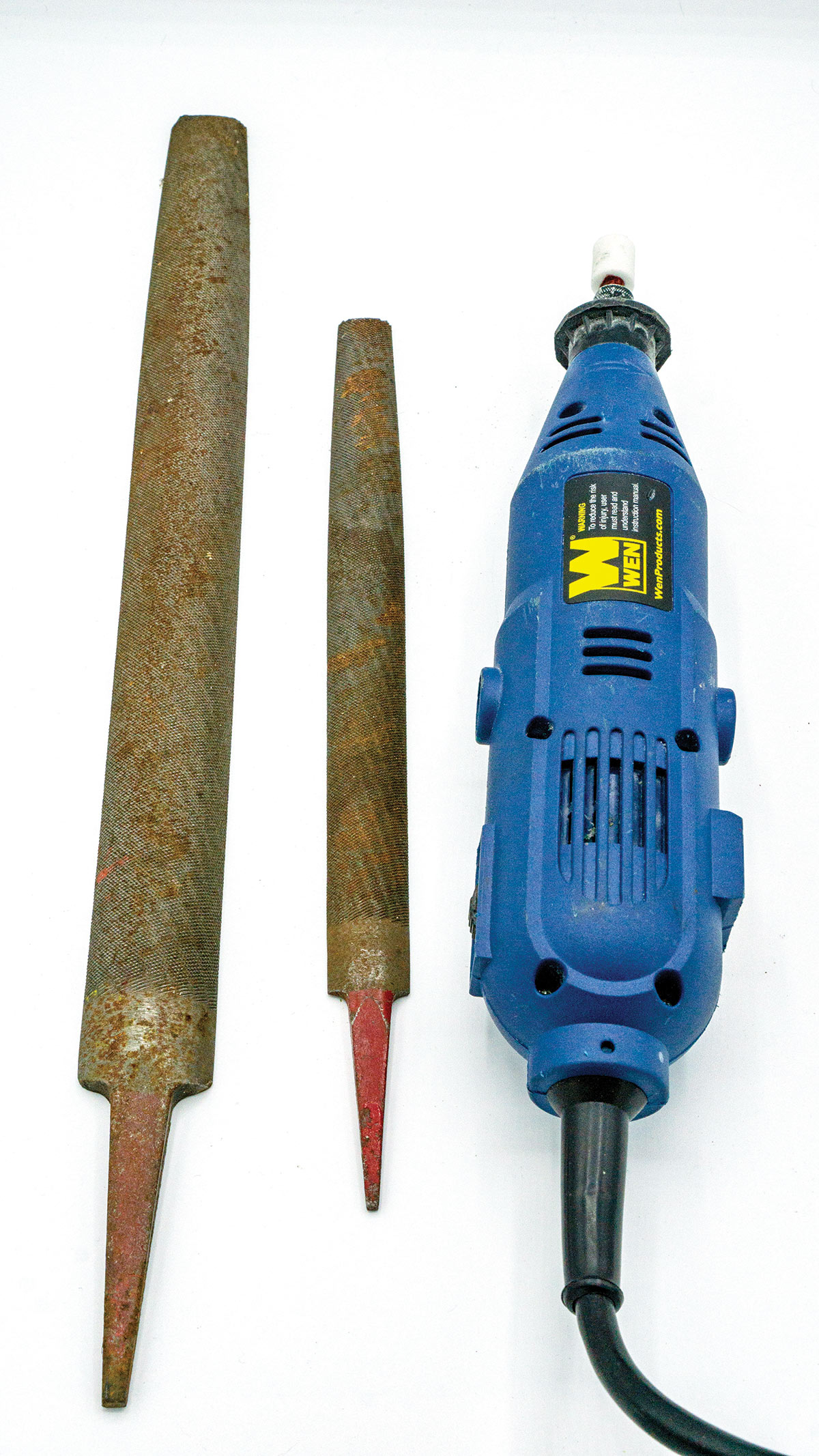
The problems I was having seemed to be twofold. First, my Bomber 16a wasn’t casting far enough to reach the deeper water I needed to get into on this shallow, sloping beach. Secondly, a symptom of the first problem, it was digging into the undulating sand bottom on even a very slow retrieve. I tried to mitigate this by working the plug even slower with frequent twitches, but this didn’t seem to make any difference. Daiwa SP Minnows seemed to dig into the bottom even worse, and get hit even less often, despite being able to reach the deeper water. Even my beloved Red Fins, for whatever reason, went completely untouched!
Determined to figure it out, I went to the local tackle shop and picked up a couple of Bomber Long Shots. They definitely casted far enough to reach the deeper water, but I was having even more trouble with them digging into the sand. I landed one good fish on them the first night out, which hinted I might be on to something, but that was it for the night.
I drove home irritated and headed straight to the garage. At 3:30 in the morning I started hand filing down the lip, hoping that I could find a solution to my problem. I had only purchased two, but went all in. I ground one down a fair bit, and one just the smallest amount. I previously read in passing somewhere that some guys had been doing this for a while with highly variable rates of success and failure, so I didn’t know what to expect.
What I ended up getting, mostly by luck, was exactly what I had been looking for from the beginning. The first night out, I landed about a dozen fish on the more extensively modified plug from 10 pounds at the smallest up to my largest from that beach at that time, a high-20-pound fish (at least) which I released without weighing. While not a true cow elsewhere, after mostly catching “teener” fish from this spot for a couple seasons, in my mind it was a trophy-sized fished. But, more importantly, I felt I had unlocked hidden potential from an entire class of lures.
Make Plugs Work For You
One of the biggest lessons from this article I am trying to impart is that you should always be thinking about the shortcomings in your current plug offering and trying to determine an appropriate solution. Don’t try to force a lure to work, even if it has elsewhere. It’s the “square peg in a round hole” idea. Finding the right solution is often easy: simply purchase something that is right for the situation. However, sometimes something commercial doesn’t exist. In this case, you shouldn’t be afraid to modify a lure to fit your needs.
An easy example of this is loading Red Fins. Almost everyone loads this plug, sometimes to their own detriment (Yes, I like and fish unloaded Red Fins at times.). However, in my experience fishermen and women are a little more nervous about messing with the lip of a plug because it permanently changes the lure, and if it doesn’t work, you’re out 8 to 20 dollars (or more). So why do it? Well, in this specific case, grinding a lip offers significant advantages over a stock plug: it can get your plug shallower, change its action, and make it work better in current.
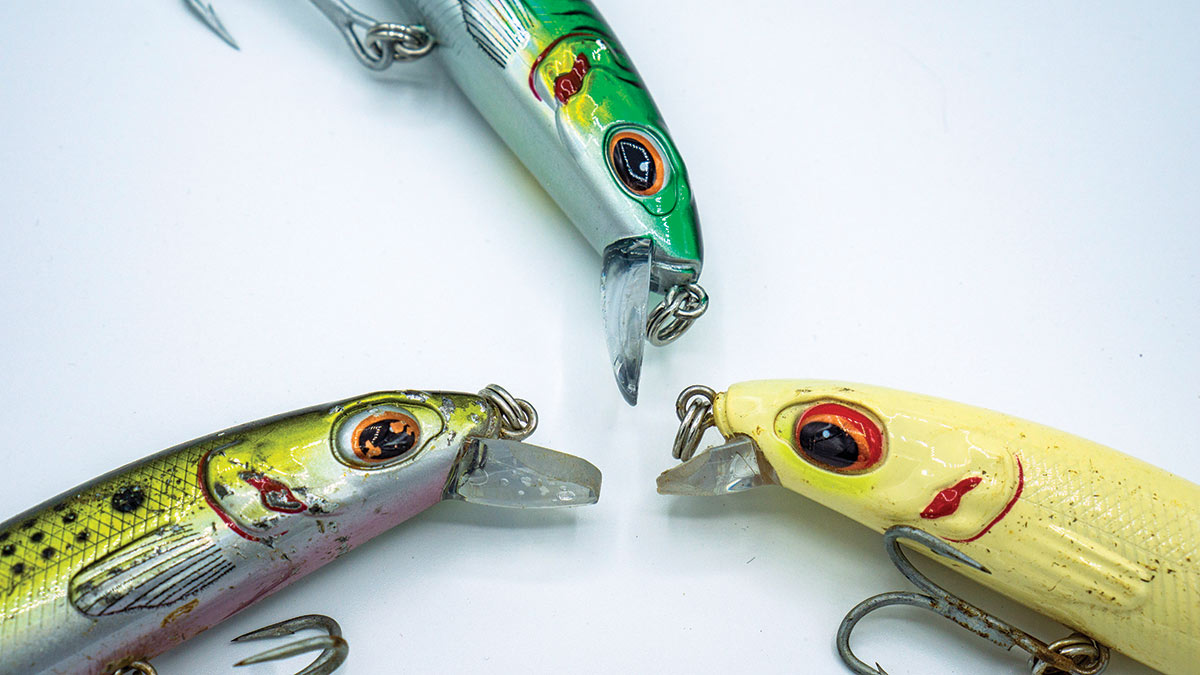
The story above is a great example of a couple of these ideas. I have ground the lips of various sizes of Bombers, Red Fins, and SP minnows since my initial experience to keep them from digging into shallow, sandy bottoms, or to keep them right on the surface and over the tops of boulders. They all take to grinding differently, and I will admit I have not tried every combination of grinding of every plug available. For me, grinding the lips on the large, 7-inch Bomber Long Shots has proven the most useful and successful. They seem to hold their action the best with the grinding, and it really does make a dramatic impact on how deep they dig. Since they are inexpensive plugs with good hardware, I think they make a lot of sense for this modification. However, I encourage you to figure out what works best for your situation. I’m sure there is a lot of untapped potential!
Before I go any further, a word of warning is in order: grinding will impact a plug’s action, not just its diving depth, significantly. This can kill your plug, or it can be a positive change. Especially with larger fish, this mellow action of a swimmer with a ground lip can often increase your catch rate. After all, one of the greatest big-fish catching plugs is the needlefish, which has no action at all. If I feel I want more flair from a plug, while also staying shallow, I add a tail flag to help accentuate the more modest action of a ground lip. Further, if I want mellow action but still want the plug to go to stock depths, I can grind the lip and then load the plug. This can get really tricky quickly and requires testing and patience. In general I prefer to either grind or load, not both.
The benefit of grinding that has surprised me the most, and I discovered this by accident, was an increased effectiveness in strong current. As anyone who fishes inlets or breachways has likely encountered, during ripping tides, many swimmers will not work effectively against the current as they swim wildly and roll out. I have found that grinding the lip of swimmers can make a huge difference in this regard. I discovered that if I go heavy on the grinding, I can quickly get to a point where a plug will not swim at all under normal conditions. However, if I put it in heavy current, it regains some or all of its normal wiggle again, and therefore can be used in areas where its unmodified clones cannot. I have done very well using this technique on a few different occasions. Just last season, I used my “lip modified” plugs in heavy current to catch a couple dozen fish to almost 30 pounds that I am convinced I would not have caught otherwise. The only warning I’ll give is that on some plugs as you grind the lip down, it decreases their durability, so be careful if you’re fishing in rocky structure.
Lip Service Tips
One piece of advice I can give you from my experience is to try to keep the factory shape of the lip. As I grind or file a lip, I keep to the original shape even if I make it extremely small. While there may be plugs that respond to grinding the lip narrower or flatter, I have found that for me it works best to retain the same shape. It absolutely doesn’t have to be perfect; you’d be surprised how much you can “mess it up” and the plug will still swim. But the more precision, the better the results. An important aspect of this that I missed at first is that the lips of many plugs get thicker as they go back to the body. Keeping the factory thickness to length proportion is the most difficult part, and if you aren’t careful you can break the lip off entirely. But, if you don’t shave the thickness down, they often don’t swim as well in my experience.

To this point, starting small and testing the plug in real-life conditions is important. There’s nothing worse than taking too much lip off and ending up with a plug you don’t have confidence in because it doesn’t do what you expected. Note, I didn’t say worthless, because you never know where that super-subtle or needlefish-like plug might work. Just throw it in a bin and save it, this is how I discovered my modifications worked in heavy current. Another tip, I take a photo of the plug before I start working on it as a reference when I begin the grind. To make sure I get the result I’m looking for I do prefer to hand file the lips. It goes fast, taking only a few minutes, and I have broken off less lips using hand tools.
As far as tools, this is a simple solution requiring minimal investment in specialized equipment. I have two hand files, one rough and one fine, and an inexpensive electric hand Dremel once I get a pattern I like. The great thing about all this is that you’re starting with a plug that is relatively cheap to begin with, so it’s not a huge loss if you destroy it. No matter what you decide to use, I suggest a face mask to prevent breathing in the plastic particles, and eye protection is wise if you use an electric tool.
Regardless of what plugs you choose and how you go about modifying the lip, have fun with this simple modification and be creative. You might just unlock the next “must-have” plug and be the envy of all your fishing buddies.


